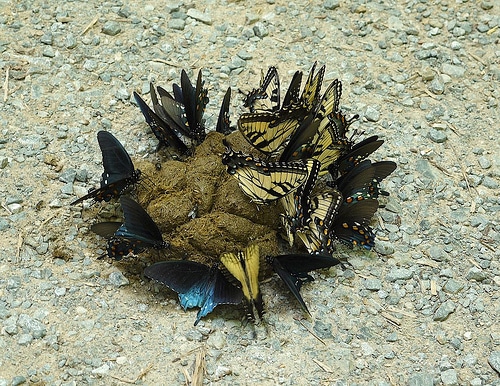A hybrid animal is a distinct creature which is the result of interbreeding of two different species. These half-breeds share mixed genetic traits of both parent species, and are usually sterile, such as in the case of the mule,...
A hybrid animal is a distinct creature which is the result of interbreeding of two different species. These half-breeds share mixed genetic traits of both parent species, and are usually sterile, such as in the case of the mule, although that’s not always the case.
Hybridization usually occurs when two genetically closely related species produce offsprings, and can occur both naturally in the wild and artificially through human intervention.
In a controlled environment, like zoos or scientific research facilities, deliberate hybridization can take place. In nature, crossbreeding can result from overlapping territories and mating behaviors of closely related species. The changing climate and human expansion into wildlife habitats have increased these encounters, leading to the appearance of hybrids such as the grolar bear, a cross between a grizzly and a polar bear. Amazingly, some biologists now believe that as many as 10% of animal species occasionally breed with another species.
As hybrids are usually infertile and therefore do not produce offsprings of their own, most are extremely rare in the wild.
These hybrid animals challenge our notions of species boundaries and captivate scientists and the public alike. Some of these animal hybrids are so astonishing, they may look fake – but we assure you they’re in fact completely real.
Zonkey or Zebroid – Zebra / Domesticated Donkey
The zonkey (or zebroid) is an amalgamation of a zebra and a domesticated donkey. As both are equine species, breeding them via human intervention is not too challenging, but the two species will usually not breed under natural conditions (a donkey and a zebra would also not often cross paths in the wild).
At the Chyulu National Park in Kenya, however, a strange young foal was seen running beside a zebra mother. It looked very different than other zebra foals, and was, in fact, a zonkey.
The zonkey retains a few of the coat qualities of both the donkey and the zebra. This includes the black and white stripes common to the zebra. As is common to most hybrids, the zonkey is infertile and cannot produce offsprings of its own.
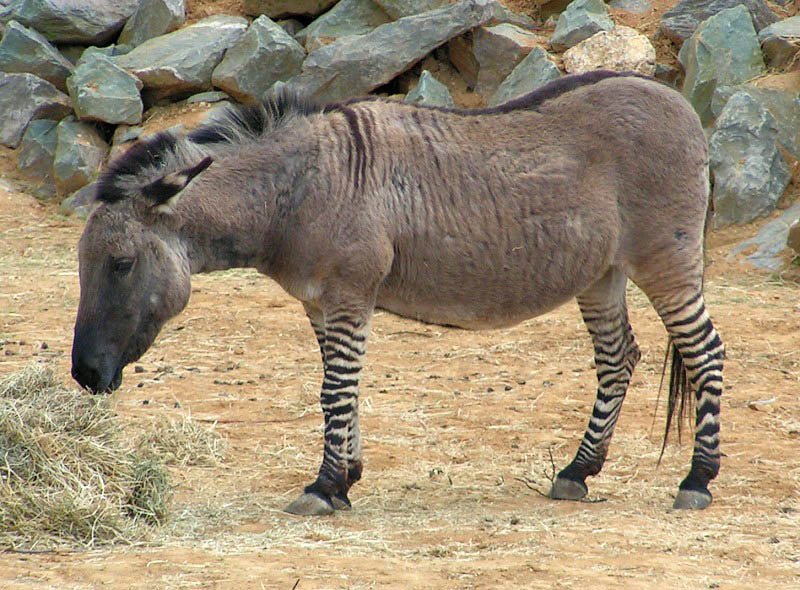
Liger – Male Lion / Female Tiger
The liger is arguably one of the most well known hybrids, and gained many fans when the internet first caught wind that such a super-cat existed.
These hybrid big cats grow to be much larger than either its father lion or its mother tiger (they can grow to weigh around 1,200 lbs). This is the result of the common hybrid gigantism, which occurs when neither parent has the growth inhibitor gene that stops an animals from keeping on growing.
While tigers are loners, ligers tend to inherit the social temperament of the lion – a pack animal. However, they are like their mothers in that they like to swim (which as any cat owner will tell you, not all cats do).
Unfortunately, ligers grow to such a size that their body often cannot support its own mass, and their sheer size becomes too much for their pumping heart to bear. This can often lead to a short life expectancy.

Tigon – Female Lion / Male Tiger
The tigon is the converse of a liger: instead of a male lion and female tiger, it results from a female lion and a male tiger. Interestingly, these hybrids don’t grow to be quite as large as when their parentage is reversed.
Some tigons have a mildly-sized mane, while others have none at all. They often have the sandy base coat coloring of a lion, with a faded stripe pattern of a tiger. Unlike some of the hybrids on this list, tigons can sometimes produce cubs of their own.
While the natural habitat of these two big cat species overlaps to some degree in India, there is no evidence of a tigon (or liger, for that matter) ever being born naturally, in the wild.

Wholphin – Bottlenose Dolphin / False Killer Whale
While whales and dolphins are closely related members of the cetacean family, this particular hybrid is created by the rare breeding of a bottlenose dolphin and a false killer whale. Like killer whales (Orcas), false killer whales are also mislabeled – they are actually one of the biggest members of the dolphin family.
The first recorded wholpin was born in Tokyo, Japan, at a SeaWorld park in 1981. The first few wholpin calves never made it to adulthood as the mothers refused to nurse their young. However, one calf born in 2004 is alive and well today: Kawili Kai, the 17-year-old wholphin, lives at the Sea Life Park in Hawaii.
The wholphin is much larger than a bottlenose dolphin, and at one year of age, is already the size of a full-grown bottlenose.
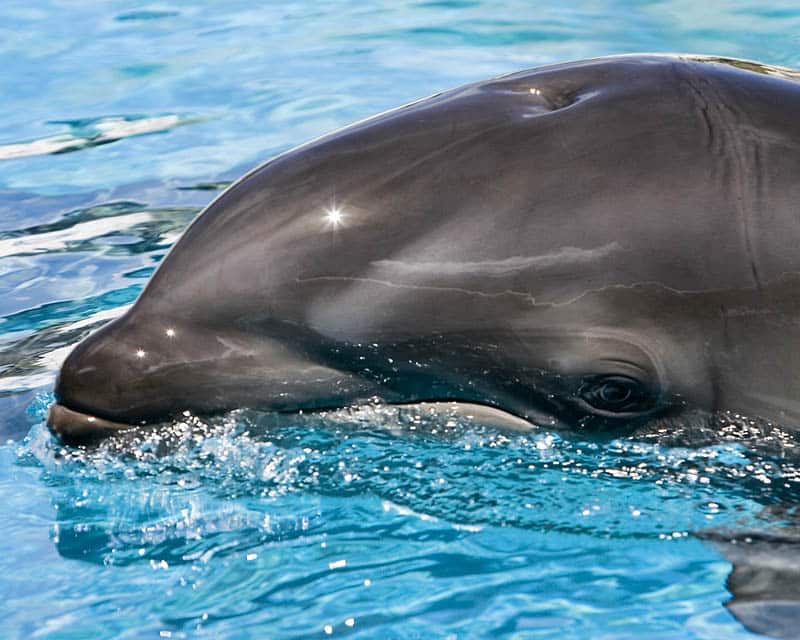
Savannah Cat – Serval / Domestic Cat
The savannah cat is the result of a domestic cat interbreeding with a serval, a wild cat species endemic to a few regions in Africa. The serval is a medium-sized wild African cat with beautiful cheetah-like spots and unusually large ears (which were the qualities breeders were hoping to achieve with a domestic cat breed).
The resulting offspring has tall springy ears and the stunning coat of a serval. Some, however, have variations of these fur markings: Some have more marbled coat patterns or a cinnamon-like blended color.
This cat crossbreed is said to have many characteristics you would normally associate with a dog. It likes to play fetch, run around and play, and jump into the water (a feat most cats avoid at all costs).
Due to its popularity, this hybrid has been recognized as its own species, and is officially recognized as a cat breed by the International Cat Association.
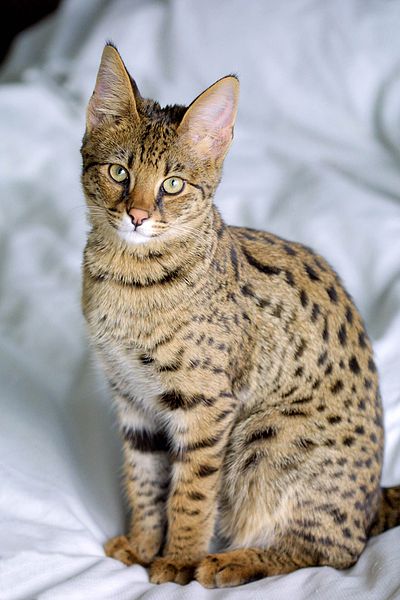
Grolar Bear (or Pizzly bear) – Polar Bear / Grizzly
Grolar bears (or pizzlies) were born in captivity, and have also been found in the wild. This hybrid is the result grizzly bears and polar bears coming into contact with increasing frequency over the years than once believed possible.
As climates get warmer, Grizzly bears are able to venture further north than at any time in the past, resulting in neighboring natural habitats with their arctic distant cousins who, as the ice sheets that polar bears normally use to hunt and fish begin to wither, tend to spend more of their time on land.
These bears have the thick, white signature coat of the polar bear, but the claws, humped back, and brown patches of fur as the Grizzly.
For more information about this fascinating hybrid, see this comprehensive article.

Leopon – Leopard / Lion
As its name implies, the leopon is a hybrid of a leopard and a lion. More specifically, they are the offspring of a male leopard and a female lion.
Though one has never been spotted in the wild and is widely considered an unlikely natural combo due to the considerable size differences of these two big cats, there is considerable overlap between these two cats’ natural habitats. While some have speculated that these animals exist in the wild, there is no scientific evidence to support this.
Those born in captivity had the signature spotting of the leopard, with the mane and tufted tail of a lion.
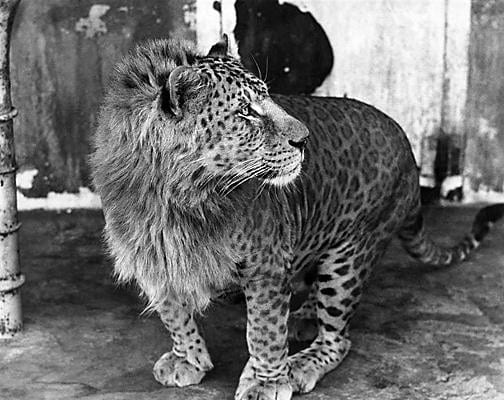
Zorse – Zebra / Horse
A zorse is is the hybrid offspring of a female horse and a male zebra, and blends together the most notable elements of the zebra (its black and white stripes) with those of a horse (the flat coat).
In contrast with the giantism commonly seen in ligers, the zorse is frequently subject to dwarfism. Like mules, they are sterile.
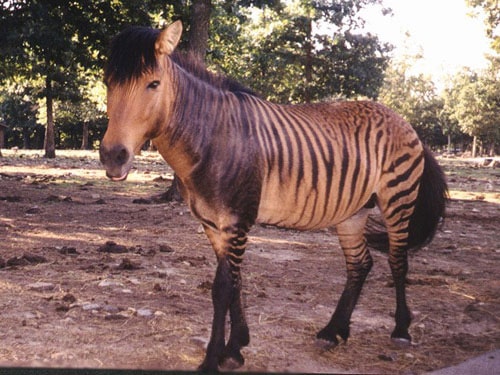
Geep – Sheep / Goat
The Geep is the result of a goat and sheep producing an offspring. Geeps don’t seem to have a high frequency of size abnormalities, but they do sometimes suffer from dwarfism.
In Scottsdale, Arizona, a geep named “Butterfly” can be viewed (and petted!) by the public at the Scottsdale petting zoo.
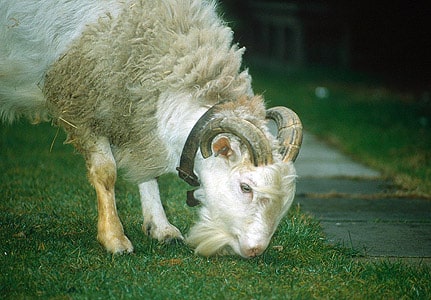
Hybrid Blacktip shark – Common Blacktip Shark / Australian Blacktip Shark
Hybrid blacktip sharks are the result of two other sharks species (the common blacktip shark and the Australian blacktip shark) breeding in the wild. The hybrids have been shown to successfully go on to reproduce themselves, essentially branching to form a new species.
Scientists speculate that the interbreeding of these two species is an adaptation to shifting environmental conditions – specifically, rising ocean temperatures.

Cama – Camel / Llama
The cama is the hybrid of a camel and a llama, which are two closely related species that have adapted to very different environments: the llama’s woolly coat protects it in colder, mountainous climates, while the camel is famously adapted to dry and hot desert environments with their signature humps and other characteristics.
Despite their seemingly drastic differences in appearance, the two species have been able to interbreed. These hybrids were created via artificial insemination, with the goal of producing animals with the size and strength of camels and the more cooperative temperament of llamas.
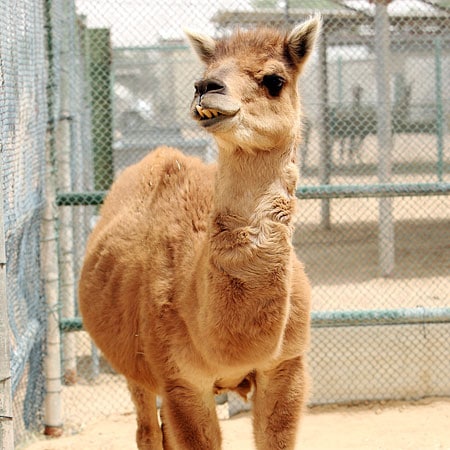
Narluga – Narwhal / Beluga Whale
Narlugas are, as you might have guessed, the result of narwhals breeding with beluga whales. The first confirmed narluga whale was caught by an Inuit hunter, which means this animal hybrid occurs naturally in the wild. Unfortunately, the reasons for this interbreeding are thought to be related to climate change.
As the climate changes and populations become stressed (due to everything from increased acidification to the spread of invasive species), the habitat of these cetaceans contracts and becomes more overlapping. This can ultimately be extremely detrimental to the longevity of each of the species.
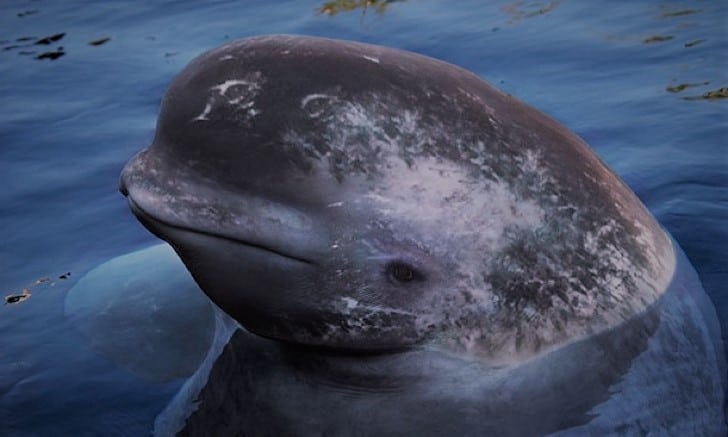
Jaglion – Jaguar / Lion
The jaglion was created through the selective breeding of a jaguar and lion (apparently, people just want to see what every kind of big cat would look like if it is crossed with a lion).
While the animal is exceptionally rare, a few have been born in different animal sanctuaries. The two jaglions born at the Bear Creek Sanctuary in Ontario, Canada, were named Jahzara and Tsunami. They are not able to reproduce.

Wolfdog – Wolf / Dog
Wolfdog hybridization (which, as the name suggests, is a mix of a wolf and dog) is possible due to the shared ancestry of dogs and wolves, and can take place between any dog breed and various species of wolf, including the gray wolf, eastern timber wolf, and red wolf.
The species are afforded this breeding variability because of their phylogenetic closeness: because dog domestication only happened a few thousand years ago, the animals have not been changed so much as to alter their ability to interbreed. Stray dogs and their wild wolf ancestors have been known to mate in the wild, and wolves are also intentionally bred with a variety of dog breeds (everything from poodles to German Shepherds) for the offsprings to be kept as pets.
Interestingly, more primitive dog breeds such as Alaskan Malamutes are known to have higher amounts of “wolf” present in their genome compared to other breeds, as can be seen in DNA tests. This is believed to be a result of interbreeding between working sled dogs and wolves throughout history.
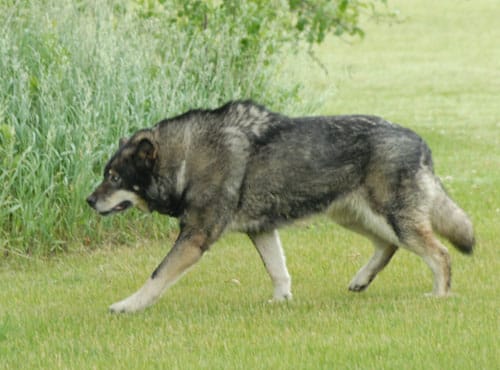
Beefalo – Buffalo / Cow
Beefalos, which first originated around 200 years ago, look like a cows (but substantially larger), and also maintain a few qualities that make them unique. One of these qualities happens to be a less detrimental effect on the environment, because buffalos (Bison) emit fewer greenhouse gases compared to domesticated cattle.
Interestingly, mating a domestic cow with a buffalo steer is challenging. However, when a domestic bull and female bison cow were mated, the resulting offspring are not only viable, but able to reproduce on their own.
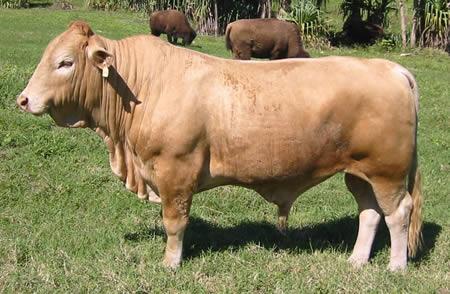
Hinny – Female Donkey / Male Horse
A hinny is the result of a female donkey mating with a male horse, a combination much less common than the mule. Surprisingly, the different result of this different match-up of parents is relatively easy to spot: the animal is substantially smaller than its counterpart the mule, which is the infertile offspring of a female horse and male donkey, and has a more robust mane compared to mules. It is also much stronger.
Scientists have speculated that the size differences between these two hybrids might be due to the differing womb sizes of donkeys and horses: donkeys have smaller wombs, so their infants will be smaller, like the hinny. Horses have larger wombs, so their infants can grow larger, like a mule.
There have only been a handful of documented cases of mules reproducing successfully. With hinnies, there has only been one such case.
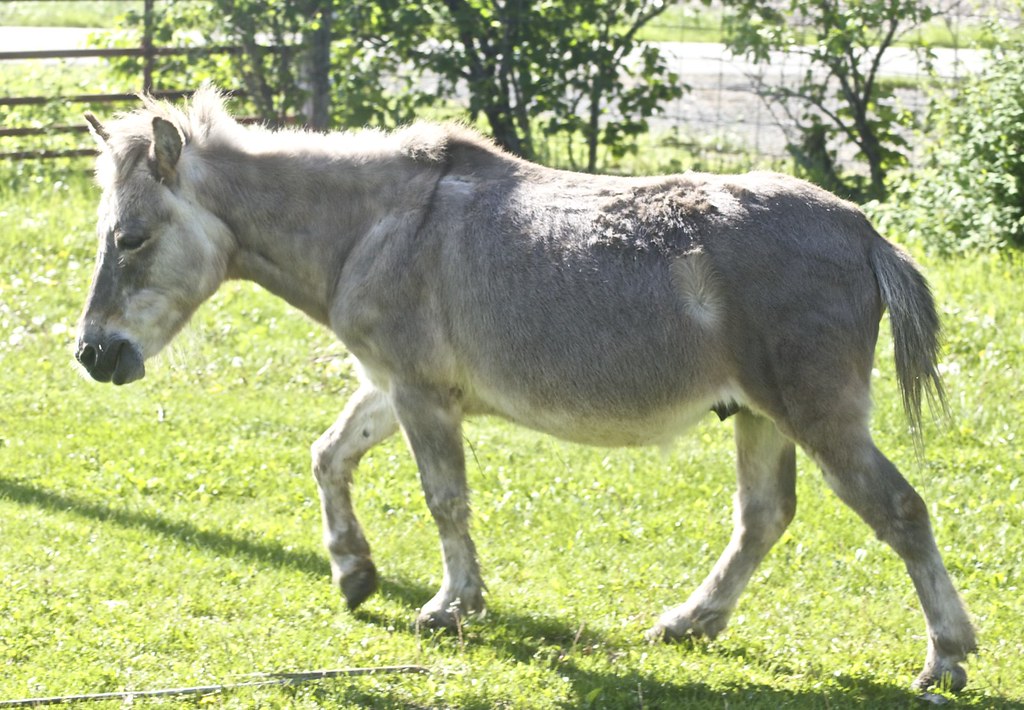
Dzo – Yak / Cow
A dzo is a male offspring resulting from a yak-domestic cow mating. A female is referred to as a dzomo. Both are used for meat and milk in Tibet and Mongolia, and are considered a delicacy, much more so than their individual parent species. They are also larger and stronger than a yak or local cattle, and produce more milk than cattle or yaks do.
While the dzo is born sterile, the dzomo is fertile and able to reproduce. The dzomo’s offspring, when mated with a cow or yak, can reportedly produce offspring that are fully yak or fully cow. These offsprings are referred to as ‘back crossed’, and it is thought that a result, many supposedly pure yak or cattle in fact carry each other’s genetic material.

Mulard – Muscovy Duck / Domesticated Duck
The mulard is an odd duck. Resulting from the mating of a Muscovy drake (‘drake’ is the term for a male duck) and a domesticated duck (which is derived from the wild mallard). The American Pekins breed of domesticated duck is often used for this hybridization, but other domestic ducks can also be used to breed mulards.
The mulard is often bred for the purpose of meat production. For this reason, the reverse parent pairing of this species (a domesticated duck father and Muscovy mother) is less common because those offsprings tend to be smaller.
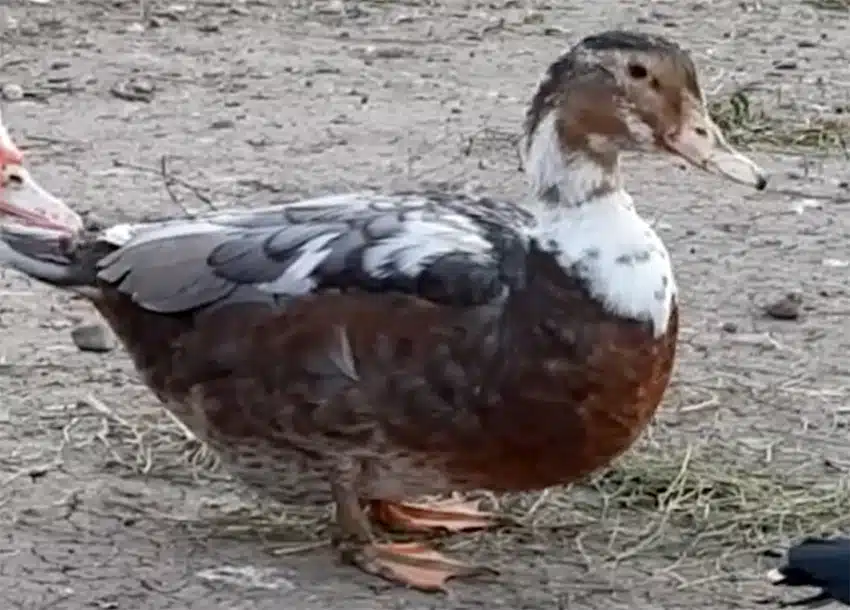
Mule – Horse / Donkey
The mule is probably the most well-known hybrid in existence. It is used in intro biology classes everywhere to discuss one of the primary tenets of speciation (those of the so-called post-zygotic barrier), but also as a sign of what can happen when two animals of different species produce an offspring. The result, in the case of the horse and donkey, is a mule.
Mules are almost always sterile and unable to reproduce on their own. This is because of the differences in chromosomal makeup of the two animals (horses have 64 chromosomes while donkeys have 62). There have been live births born from a mule mother, but they are few and far between. It is generally not worth risking the mule mother to a pregnancy with a low probability of viability.
Mule are preferred over donkeys because as working animals they exhibit the docile, pliable temperament of the horse, while donkeys are famously stubborn.
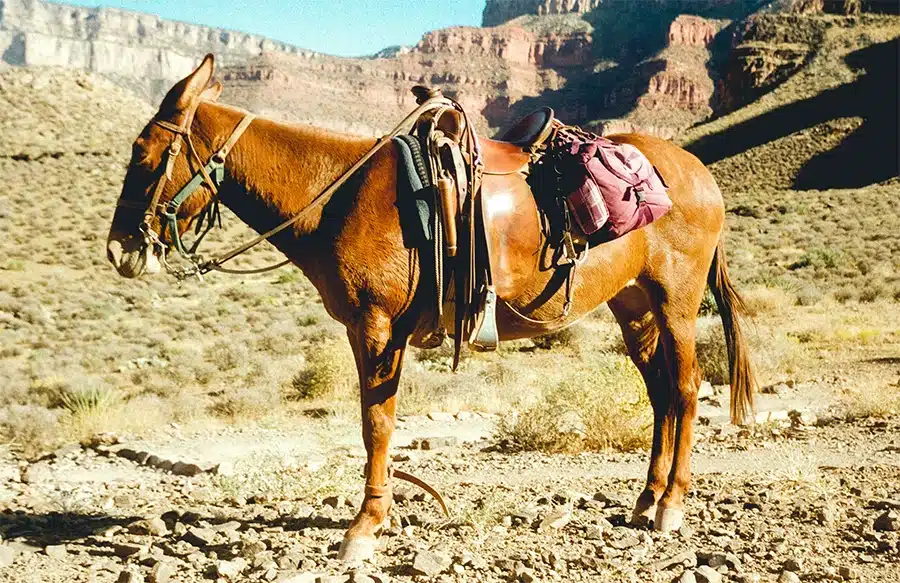
Blood Parrot Cichlid – Midas / Redhead Cichlid
The blood parrot cichlid is a hybrid of two other fish species: the Midas, a species localized to Costa Rica and Nicaragua, and the Redhead Cichlid.
Unfortunately, these hybrids combinations of features from their parents compromise this fish’s ability to survive. Despite its splendid outer colors, it has a very small mouth and therefore has trouble feeding.
Because of this, the blood parrot cichlid is not really a viable hybrid. So while people breed it for its pretty outer colors, it won’t thrive and proliferate. In fact, many aquarium enthusiasts boycott shops that sell this hybrid fish.
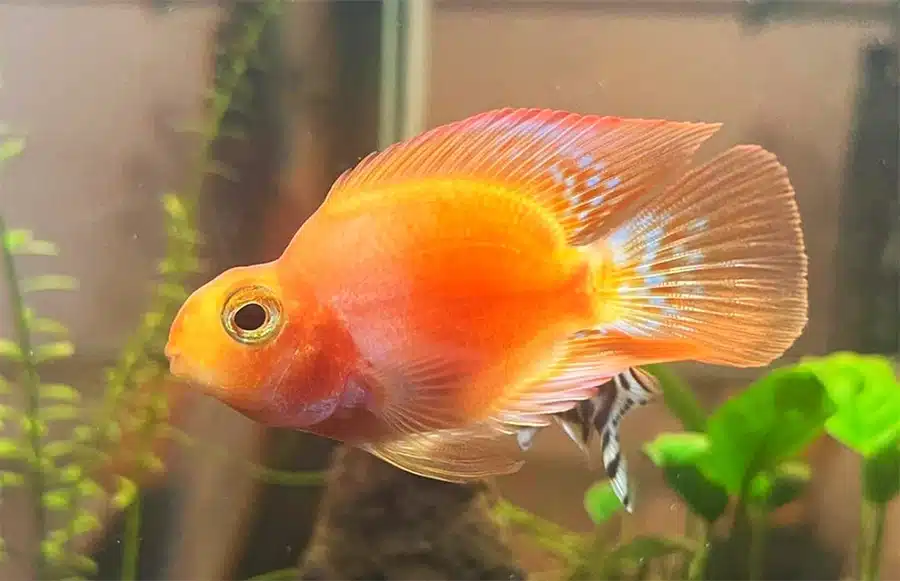
Rhino hybrid – Black and White Rhino Hybrid
Black rhinos and white rhinos are different species. This hasn’t, however, stopped them from interbreeding. While under normal circumstances, the two are separated by numerous geological barriers, they can breed if placed into the same environment. There are also some fringe parts of their habitats that overlap, so it is believed they could in fact breed in the wild, as well.
The result of this hybridization is a rhino that looks a little different than either of its parent species.
Unfortunately, rhinos as a whole are rapidly declining in numbers. In captivity, the white rhino in particular is reluctant to breed. The Southern white rhino was already declared extinct in the wild, and the few remaining members of this subspecies are in zoos or in sanctuaries.
The black rhino is considered critically endangered, and three subspecies of this horned animal have already been declared extinct.
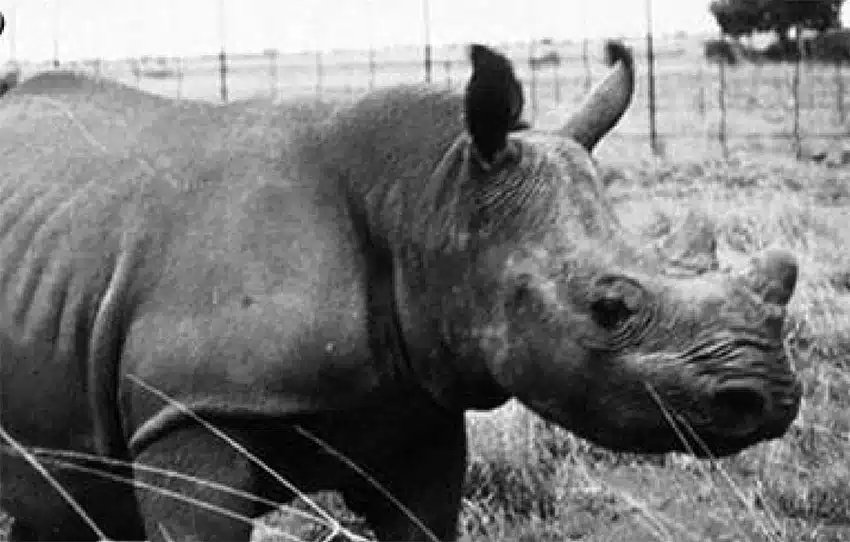
Red-grey kangaroo – red kangaroo / grey kangaroo
The red-grey kangaroo is a hybrid that originates from the red kangaroo and the great grey kangaroo.
Since these two distinct species rarely interact in the wild (and don’t often produce fertile offsprings), this hybrid is extremely rare in the wild and is usually the result of human intervention.

Killer bees (aka Africanized bee) – honey bee (apis mellifera) / African bee
Much to the chagrin of humanity, killer bees were invented. That’s right – these especially aggressive variety of bees was created by people. And, once created, they thrived.
In the 1950s, scientists were looking for ways in which to increase honey production and could survive in more tropical, humid climates. To do so, they interbred a two different species of bee: the honey bee (apis mellifera) and the African bee (apis mellifera scutellate). The African bee is known for its aggressiveness, and has been known to often take over colony of other bee species, destroying them.
Originating in Rio Claro, Brazil, the killer bees (as they eventually come to be known) eventually broke loose. What’s worse is that the bees had developed—along with an increased ability to produce honey—an amplified tendency to defend the colony.
Their venom is also stronger than that of the European honey bee, and they have been known to swarm people and animals, making this one hybrid that you definitely want to avoid.

Coywolf – Coyote / Wolf
Coyotes and their larger cousin, the wolf, have been known to interbreed in areas in which their habitat overlaps. In eastern North America, this interbreeding produced an entire new species called the Eastern Coyote (canis latrans var), which now thrives in the wild throughout the eastern United States and Canada.
Eastern coyotes are fascinating animals that represent a complex blend of genetics. They are hybrids with lineage tracing back to coyotes, wolves, and also domesticated dogs. Genetic tests have revealed that all eastern coyotes carry a mix of these three species’ DNA. This hybridization likely first occurred in the Great Lakes region in the 1930s to the late 1940s, resulting in an animal larger than a pure coyote with some physical traits more commonly associated with wolves, such as longer legs and a larger jaw, which is indicative of their mixed coyote and wolf parentage.
It is thought that this hybridization first occurred due to dwindling populations of wolves in these areas, which caused wolves and coyotes to mate beyond their species boundaries.

Pumapard – Puma / Leopard
The pumapard is a cross between a puma and a leopard, and can be the product either the puma or the leopard being either father or mother, with different combinations not producing different results.
Pumapards are subject to dwarfism, and only grow to be about half the size of their parents.
Not naturally occurring, these hybrids have been produced in the past via artificial insemination.
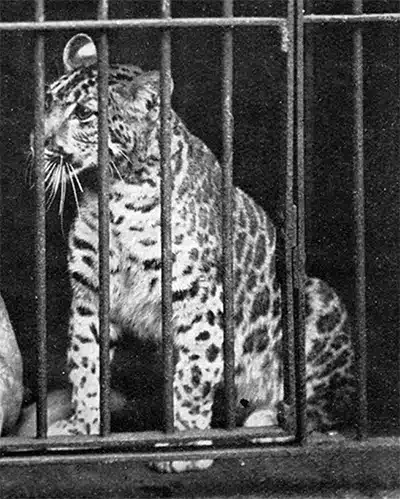
Struddlefish – Russian Sturgeon / American Paddlefish
The struddlefish was a surprise to the researchers who created it. It is the product of a cross between the Russian sturgeon (famous for its production of a favorite variety of caviar) and the American paddlefish. Both are critically endangered species that researchers wanted to bred in captivity.
The two fish’s last common ancestor was almost two hundred million years ago. Apparently, during that time, neither fish evolved much genetically, which is why after all that time, they were still genetically compatible.
Researchers accidentally fertilized sturgeon eggs with paddlefish sperm, and were surprised to see offspring that featured distinct features of each parent fish.

The land-marine iguana – Land Iguana / Marine Iguana
It’s fitting that a hybrid would naturally occur in the place where Charles Darwin first observed the biodiversity that facilitates evolution.
The land-marine iguana is the product of a male marine iguana and a female land iguana. Scientists believe that at some point in recent history, marine iguanas food supply collapsed, causing a massive decline in their population. It also caused some of the marine iguanas to go onto land in search of food.
Male marine iguanas are larger and more aggressive that female land iguanas, and so the female land iguanas may have had little choice in the matter.
These hybrid iguanas have only ever been found in the South Plaza Island of the Galapagos archipelago.
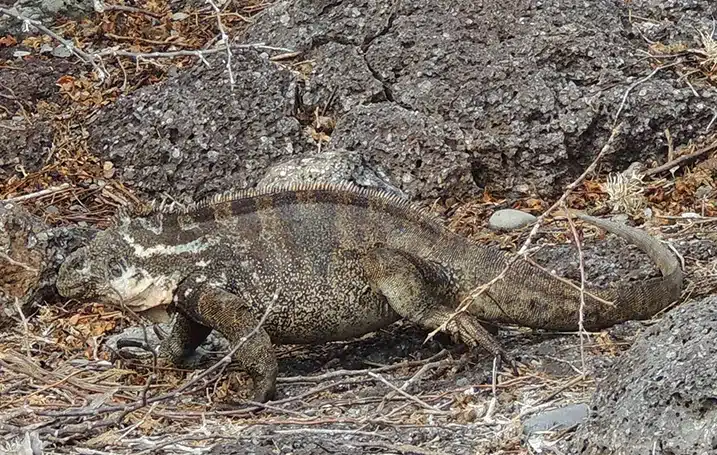
Hybrid Tiger Salamander – California Tiger Salamander / Barred Salamander
This is the story of two salamanders: One is a species from California, the other from Texas. As you may have heard, everything is bigger in Texas.
The Texas salamanders were brought to California as fishing bait, but a few escaped and made their way to the habitats of the California tiger salamander. The California salamander was already struggling and endangered, so the introduction of the more competitive Texas Barred Salamander made things even harder for the native species.
Meanwhile, back in Texas, habitats destruction of the Texan salamander led to population declines.
The two species ended up interbreeding, and their offspring would be even bigger and more aggressive than both mom and dad.
Now, the Texas-California hybrid, is a super-salamander dominating the ecosystem.

Burmese / Indian Rock Python Hybrid
In yet another only-in-Florida situation, Burmese pythons are a big problem. It is believed that some of the Burmese pythons were set loose in the Everglades by irresponsible pet owners. But Hurricane Andrew may have really kicked the whole situation off when it destroyed a python breeding facility, likely letting many pythons out into the wild at once.
As if a growing number of invasive, ecologically destructive Burmese pythons isn’t enough of an issue, somewhere along the line, some Indian Rock pythons got away from their owners, too.
The two pythons met, mated, and an only-in-Florida super-python was born. The hybrids are bigger and capable of spreading further than either parent species. Their parent snakes are adapted two different environments, and the Burmese-Indian python seems well adapted to both.

Khonorik – Polecat / Mink Hybrid
Polecat-mink hybrids occur in the wild, but are rare. Scientists believe this hybridization occurs when European polecat populations are in decline, as a last-ditch effort to procreate when the going gets tough.
The two species generally live in two different but neighboring habitats with some areas of overlap. The European mink lives in the colder, most Northwestern part of Russia that borders Scandinavia and Eastern European countries. The European polecat is found all around mainland Europe, extending into the warmer, balmier climates of Southern Europe.
As climates warmed in the early 20th century, the polecat was able to wander further and further into the mink’s habitat, increasing the amount of contact the two species had.
From the hybrids created in captivity (mostly to be kept as pets), it seems that male Khonoriks are sterile, but females are fertile.

Bengal Cat – Asian Leopard Cat / Domestic Cat
The Bengal cat is a striking and distinctive domestic cat breed, known for its wild appearance and energetic personality. This breed originated from the crossbreeding of the Asian leopard cat—a small, forest-dwelling wild feline found throughout Southeast Asia—with domestic cats. The aim was to create a cat with the physical allure of a wild leopard but the temperament of a household pet. The first successful breeding of a Bengal cat occurred in the 1970s, and since then, the breed has gained popularity for its exotic looks and playful demeanor.
Bengals are medium to large cats, with males typically weighing between 10 to 15 pounds and females a bit smaller. Their most notable feature is their luxurious coat, which boasts vivid markings such as rosettes, spots, and marbling. These patterns come in various colors, including brown, silver, and snow, and the coat itself has a unique glittering effect that makes it look as if it has been sprinkled with gold dust.
Beyond their beauty, Bengals are known for their intelligence and active nature. They are highly social animals that enjoy interaction with their human companions and often exhibit a dog-like loyalty. Their athletic prowess is impressive; they are excellent jumpers and climbers, and many Bengals have a fondness for water, which is unusual for domestic cats. This breed requires ample mental and physical stimulation, so interactive play and access to climbing structures are recommended to keep them engaged and content.

Yaez – Nubian Ibex / Goat
The Yaez is a hybrid between a Nubian ibex and a domesticated goat. Both are members of the Bovidae family and the Caprinae subfamily, which means they share a close genetic relationship.
Nubian ibex are wild goats that are known for their impressive, backward-curving horns and rugged adaptability to their mountainous habitats across northern and northeast Africa, and the Middle East. Domestic goats have been bred over thousands of years to produce a variety of breeds with diverse characteristics suited to agricultural life.
In the 1970s, Israeli researchers, began breeding hybrids of Nubian ibex and domestic goats, naming the hybrid animal “Yaez”, which is a mash up of both animals’ names in Hebrew (“Yael”, an ibex, and “Ez”, a goat). These hybrid animals are fertile and able to reproduce.

Iron Age Pig – Wild Boar / Domestic Pig
The Iron Age Pig is a fascinating example of a hybrid animal, created by crossing a wild boar with a domestic pig. This hybrid was developed to resemble the type of pigs that would have been present during Europe’s Iron Age, a period dating back to around 1200 to 600 BC. The goal was to recreate the kind of swine that might have roamed the forests of ancient Europe, an animal that would combine the hardiness and foraging ability of the wild boar with the size and temperament of domestic pigs.
Iron Age Pigs are known for their distinctive appearance, which includes a thicker, darker coat than that of a typical domestic pig, as well as a more robust and muscular build reminiscent of their wild ancestors. They often have a longer snout and the males may develop significant tusks, another trait inherited from the wild boar. These pigs are not only of interest to historians and archaeologists but also to those in the culinary field, as they are said to provide a type of meat that is leaner and more flavorful than that of conventional pork, offering a taste that some describe as a cross between pork and venison.
In terms of behavior, Iron Age Pigs can embody a mix of their parent species’ traits. They are generally hardier and more self-sufficient than purely domestic pigs, often requiring less care and being capable of thriving in rougher, more naturalistic environments. They can be more aggressive and less docile than standard domestic pigs, which is why they are less commonly found on traditional farms and more often seen in wildlife parks or specialized heritage farms.

African Elephant / Asian Elephant Hybrid
Hybrids between an Asian elephant and an African elephant are extremely rare and have in fact only been documented once. This unique event occurred at Chester Zoo in 1978, when a hybrid elephant calf named Motty was born. Motty’s father was an African elephant, and his mother was an Asian elephant, making him the only proven hybrid between the two species. His birth was a significant event for biologists and conservationists, as it provided a rare opportunity to study the genetics and viability of cross-species elephant breeding.
Motty’s physical characteristics were a blend of both parent species. He had the long, tufted tail and the ears of an African elephant, which are typically larger than those of an Asian elephant. However, his forehead and trunk were more similar to those of an Asian elephant, and he also had one domed and one flat-sided tusk, each characteristic of one of the two species. Unfortunately, Motty’s life was very short; he faced health complications from the beginning and died just a few days after his birth.
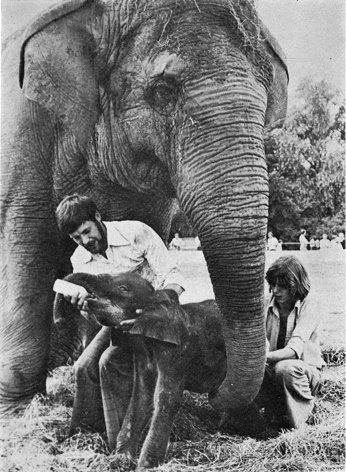
Coydog – Coyote / Dog
The coydog is a hybrid between a coyote and a domestic dog, known to occur both in captivity and in the wild. Coyotes (Canis latrans) are native to North America and are known for their adaptability to various habitats, including urban environments. Domestic dogs (Canis lupus familiaris), on the other hand, have been bred by humans for thousands of years and exhibit a wide range of appearances and behaviors. The resulting coydog inherits traits from both parents, which can lead to a wide variety of characteristics in terms of appearance, behavior, and adaptability.
Coydogs typically exhibit a mix of physical traits such as the size and build of either parent, often with a coat that reflects the coyote’s wild camouflage—ranging from tan and gray to black. They may have piercing eyes and a bushy tail, reminiscent of their coyote lineage. Behaviorally, coydogs can be more unpredictable than typical domestic dogs, often inheriting the coyote’s natural wariness of humans and high level of intelligence. These hybrids may also display strong predatory instincts and a propensity for howling, a vocalization common among coyotes.
Coydogs do not possess the same level of domestication as dogs, which can make them challenging as pets. They often require a great deal of socialization and may not be suited to environments that don’t allow for their natural behaviors and needs. Due to their hybrid nature, coydogs are not a recognized dog breed and are not recognized by any major kennel clubs.
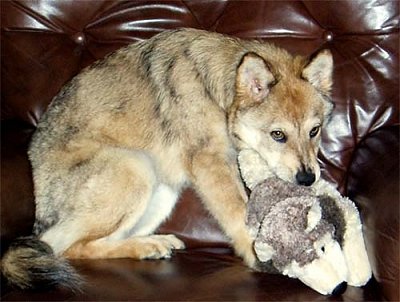
Human-pig hybrids
Human-pig hybrids (what scientists call a “chimera”) were created at the Salk Institute in La Jolla, California, and are considered by many to be an abomination. The act of their creation received no public funding because of the stigma of creating such hybrids, and so these experiments were conducted with private funding.
The aim of the Salk Institute’s experimentation was not as bleak and twisted as it may first appear. Rather, it was to create organs for human transplantation that were less likely to be rejected by the host body that receives them. By implanting human cells into the pig embryo, this possibility of non-rejected organs becomes far more viable.
None of the hybrids grew beyond the embryo stage.








